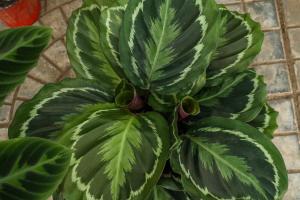How to Keep Potted Plants Warm in Winter
As temperatures drop and frost sets in, it becomes increasingly important to protect your potted plants from the cold weather. Without proper precautions, your plants can easily die during the winter months. Below are some tips on how to keep your potted plants warm and healthy during the winter season:
1. Choose the Right Container
When selecting a container for your potted plants, choose one that is large enough to accommodate the root system and one that is made from materials that can withstand the cold temperatures. Terracotta pottery, although beautiful, can crack and shatter in extreme cold, so it’s best to avoid this type of container. Instead, opt for plastic or resin pots that can better withstand the cold.
2. Protect the Roots
Potted plants are more susceptible to freezing temperatures because their roots are not insulated by the ground. To protect the roots, use an insulating material such as mulch or straw. Apply the mulch or straw liberally on top of the soil to create a barrier between the cold air and the roots of the plant.
3. Move the Plants to a Sheltered Location
If possible, move your potted plants to a sheltered location such as a garden shed or greenhouse. If you do not have a greenhouse or shed, move the plants to a porch or an area of your home that gets plenty of sunlight. Placing plants against a south-facing wall can also provide some protection from the wind and cold weather.
4. Use Frost Covers
Frost covers are an effective way to keep your plants warm during the winter months. They are typically made of breathable, water-repellent fabric and can provide up to 6 degrees of protection. Simply drape the cover over the plant and secure it in place with stakes or rocks. Do not allow the cover to touch the foliage, as this can cause damage to the plant.
5. Water Wisely
Potted plants require less water during the winter months, as they grow more slowly and need less nutrients. Overwatering can also cause the roots to freeze and die. Monitor the soil moisture levels carefully and water only when the soil is dry to the touch.
6. Consider a Plant Heater
If you live in an area with particularly harsh winters, you may want to consider using a plant heater. These devices provide consistent, gentle heat to potted plants and can help them survive even the coldest temperatures. Be sure to use a heater specifically designed for plants and follow all safety instructions carefully.
By taking the necessary precautions and following the tips above, you can help ensure that your potted plants remain healthy and vibrant throughout the winter months. With a little bit of care and attention, your plants can thrive no matter what the weather brings.

 how many times do yo...
how many times do yo... how many planted tre...
how many planted tre... how many pine trees ...
how many pine trees ... how many pecan trees...
how many pecan trees... how many plants comp...
how many plants comp... how many plants can ...
how many plants can ... how many plants and ...
how many plants and ... how many pepper plan...
how many pepper plan...































